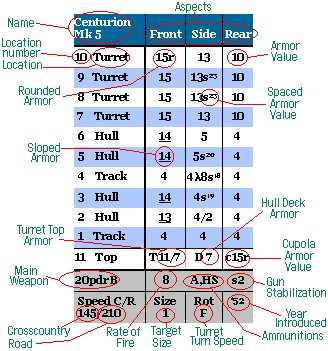|
3.0. The Turn |
||

|
5/6/2003 |
||
|
The game is played in turns. Both players may move and have combat in the same turn. Each turn represents actions done in a set period of time (about 75 seconds). Turns are sequential, thus actions done in previous turns happen before actions done in following turns. Within a turn actions sometimes are divided by type of action rather than the time the action actually takes place. It may be necessary, within a single turn, to go back in time to resolve certain situations. All this is handled by the turn phase sequence. |
||
|
3.2 Sequence of Play - Outline |
||
|
ment is structured so that those units moving the most in a turn must go before those moving the least. (One reason why orders are so important is that movement amount is committed to by the orders.) |
||
|
The Diagram |
||

|
The above diagram shows the information contained on the AFV table diagram. |
||
